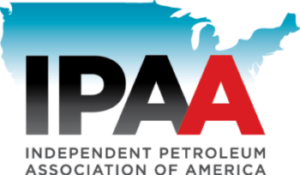
May 1, 2017 Divestment’s Price Tag: Higher Tuition, Fewer Services at Universities, Lower Payments for Pensioners
New study quantifies for the first time the true costs divestment imposes directly upon students, faculty and retirees
WASHINGTON, D.C. (May 1, 2017) – Numerous reports conclude that fossil fuel divestment is a costly and ineffective endeavor for universities and pension funds to undertake, but little research has calculated how this impact affects the people that matter most: students, faculty, and retirees. Released today, a new report for the first time quantifies the true price of divestment for these groups.
Previous studies have calculated the general costs divestment inflicts upon a portfolio due to higher risk, reduced diversification and increased transaction fees. This new research by Prof. Hendrik Bessembinder, professor of finance at the Arizona State University’s Carey School of Business, applies these financial principles to understand the direct impact of divestment on endowment spending and, in turn, the services such funds support. Focused on analyzing the finances of the nation’s public and private universities, Prof. Bessembinder found that divestment would lead to a 15.2 percent average reduction in endowment spending.
“Endowments are a vital financial resource for university spending,” stated Prof. Bessembinder. “Due to the significant financial shortfall imposed by divestment, universities who choose such a strategy will have to make serious decisions on how to make up for this loss in funding or lower their endowment spend by increasing tuition, cutting faculty, or reducing on campus services.”
Since private institutions typically rely more heavily upon endowments for expenses, these colleges pay an even higher price for the same amount of divestment than do public universities. Prof. Bessembinder calculates that to fund fossil fuel divestment, private universities would be forced to raise annual tuition by approximately $1,043 to $3,265, depending on how reliant each school is upon its endowment. A private university could also make up for lost endowment value by cutting spending on faculty by 11.5 percent, leading to fewer classes and increased class sizes. Though smaller in dollar value, most public universities would also face difficult financial decisions from divestment, such that keeping spending at current levels would necessitate tuition increases by approximately $123 to $385 on average or reductions in spending on faculty costs of 3.5 percent, or a combination of these. Universities could also forego future expected spending increases and spend down their endowments, but that would simply delay the costs of divestment at the expense of future students, alumni, and faculty.
“Divestment would make a college degree even more expensive for students who are already graduating with record levels of debt,” said Jeff Eshelman, senior vice president for operations and public affairs at the Independent Petroleum Association of America (IPAA). “Activists should not ask students to pick up the tab on this symbolic act which has no impact on the environment. When it comes to the impacts of divestment, whether in the form of increased tuition or cuts to instruction time and faculty, students only stand to lose.”
According to the new study, commissioned by IPAA, the same basic issues that make divestment costly for university endowments also apply to pension funds. Prof. Bessembinder calculated that the financial losses a typical pension fund would incur due to divestment would equate to a reduction in monthly benefits to be paid to pensioners of approximately five to seven percent, depending on the extent of the pension fund’s fossil fuel assets. While accomplishing little or nothing beyond a symbolic stance, divestment would do nothing to harm fossil fuel companies, but would transfer wealth that should go to beneficiaries to large banks or trading firms who capture transaction fees as revenue. These fees tend to be even higher at environmentally focused funds who charge on between 0.38 and 0.73 percentage points more per year than the more widely used broad market funds. Read the full report and fact sheet online.
Additional Background
The Bessembinder report is an ongoing part of the Divestment Facts program, launched by IPAA in 2015 to provide data-driven research and facts on the ineffectiveness of fossil fuel divestment. This new report represents the fourth installment in a series of recent studies that have sought to quantify the true costs of the #DivestmentPenalty. The first study, authored by Prof. Fischel, a former dean of the Univ. of Chicago School of Law, found that divested equity portfolios would incur an annual loss of 70 basis points over a 50-year period, representing a 23 percent reduction in returns relative to a diversified portfolio. The second report, authored by Prof. Bradford Cornell of Caltech, quantified the impact of divestment on Harvard, Yale, MIT, NYU, and Columbia, with divestment-related losses for those institutions ranging up to $107.8 million per year. The third report, also authored by Prof. Bessembinder, found that transaction costs and other frictional costs associated with divestment could rob an endowment by as much as 12 percent of its value over a 20-year timeframe.
Universities and Pensions Agree:
- Harvard University: “Significantly constraining investment options risks significantly constraining investment returns. The endowment provides more than one-third of the funds we expend on University activities each year. Its strength and growth are crucial to our institutional ambitions — to the support we can offer students and faculty, to the intellectual opportunities we can provide, to the research we can advance. Despite some assertions to the contrary, logic and experience indicate that barring investments in a major, integral sector of the global economy would — especially for a large endowment reliant on sophisticated investment techniques, pooled funds, and broad diversification — come at a substantial economic cost.” LINK
- American University: “AU’s endowment includes funds from a number of sources and from thousands of donors over a period of more than 100 years. These donors have relied on the board’s fiduciary stewardship to generate the maximum, risk adjusted return to support the scholarships, fellowships, professorships, construction, and other purposes for which the funds were given, regardless of the personal views of board members on climate change or other issues. The board’s primary responsibility is to fulfill its fiduciary duty to the university.” LINK
- Middlebury College: “At this time, too many of these questions either raise serious concerns or remain unanswered for the board to support divestment. Given its fiduciary responsibilities, the board cannot look past the lack of proven alternative investment models, the difficulty and material cost of withdrawing from a complex portfolio of investments, and the uncertainties and risks that divestment would create.” LINK
- CUNY College: “The majority of spending derived from the University’s investment pool is utilized for student scholarships. We are concerned that a restructuring of current investments would restrict diversification, lower expected returns, and result in higher transaction costs.” LINK
- Tufts University: “The endowment provides a critical piece of Tufts’ annual operating budget, supporting financial aid, department budgets and research programs, among other key components of our academic mission. Spending from the endowment is directly tied to its market value. To put the projected impact in perspective, $75 million would provide endowment income to fund scholarships for 100 undergraduates or annual stipends for 125 Ph.D. students, or fund the entire 2012 state appropriation for the Cummings School of Veterinary Medicine. In short, in today’s environment, divestment would likely result in a significant reduction in operating funds and would have an immediate adverse impact on the educational experience at Tufts. It would not be prudent to expose the university to that kind of risk at this time.” LINK
- Vermont Pension Investment Committee Report: “In our opinion, other portfolio-wide potentially material financial risks and opportunities posed by climate change are not addressed by fossil fuel divestment. Divestment does not: address climate change material risks (including technological, policy, physical) evident in other industries from agriculture and forestry to infrastructure, buildings and insurance. Divestment does not provide enhanced exposure to companies involved in energy efficiency and renewable energy. Publicly held equity divestment only transfers ownership of fossil fuel securities; it cannot provide fossil fuel alternatives with any new financial resources.” LINK
- New York State Comptroller Thomas DiNapoli: “My fiduciary duty requires me to focus on the long-term value of the Fund. To achieve that objective the Fund works to maximize returns and minimize risks. Key to accomplishing this objective is diversifying the Fund’s investments across sectors and asset classes – including the energy sector, where fossil fuels continue to play an integral role in powering the world’s electricity generators, industry, transportation and infrastructure.” LINK
- California Public Employees’ Retirement System (CalPERS) CEO Anne Stausboll: “Engagement is the first call of action and is the most effective form of communicating concerns with the companies in which we invest. That is why, when it comes to climate change and its risks, Calpers’ view is that the path to change lies in engaging energy companies, instead of divesting them. If we sell our shares then we lose our ability as shareowners to influence companies to act responsibly.” LINK
Biography of Professor Hendrik Bessembinder
Professor Hendrik Bessembinder is a leading market microstructure and trading expert who currently serves as a professor of finance at the W.P. Carey School of Business of Arizona State University, in addition to holding the honorable title of Francis J. and Mary B. Labriola Endowed Chair. Professor Bessembinder also serves as an Affiliate Professor in Business Economics and Finance at the Foster School of Business of the University of Washington, and a Senior Consultant to Compass Lexecon, an economic research and consulting company. His research focuses on financial markets, including stock, bond, energy, foreign exchange, and non-traditional markets, and has been published in the most prestigious peer reviewed finance journals.
Prior to the University of Arizona, Professor Bessembinder held faculty positions at the University of Rochester, Emory University, and the University of Utah where, from 2006 to 2015, he was a member of the Investment Advisory Committee for the University of Utah Endowment. Professor Bessembinder has published over 35 articles and still serves as the Managing Editor of the Journal of Financial and Quantitative Analysis and Associate Editor of the Journal of Financial Economics and the Journal of Financial Markets. Professor Bessembinder received his PhD from the University in Washington in 1986 and his MBA from Washington State University in 1978 shortly after graduating with a Bachelor’s of Science degree from Utah State University in 1977.
The study, Fossil Fuel Divestment and Its Potential Impacts On Students, Faculty and Other University and Pension Stakeholders, was commissioned and financed by the Independent Petroleum Association of America (IPAA). The views expressed by way of this paper are Professor Bessembinder’s own; he does not speak for Arizona State University, the University of Washington, Compass Lexecon or IPAA. Prof. Bessembinder was assisted in preparing this report by members of Compass Lexecon’s professional staff.
About the Independent Petroleum Association of America
The Independent Petroleum Association of America (IPAA) is a national upstream trade association representing thousands of independent oil and natural gas producers and service companies across the United States. Independent producers develop 90 percent of the nation’s oil and natural gas wells. These companies account for 54 percent of America’s oil production, 85 percent of its natural gas production, and support over 2.1 million American jobs. Learn more about IPAA by visiting www.ipaa.org and following @IPAAaccess on Twitter.








